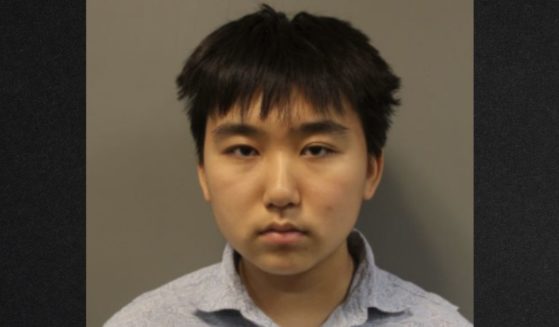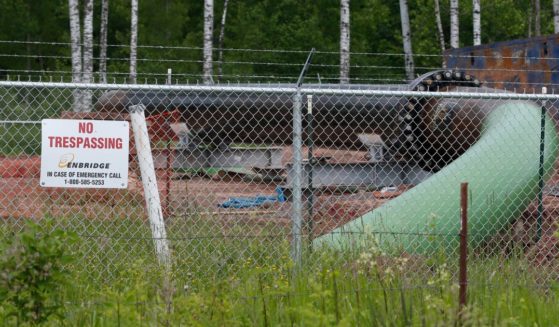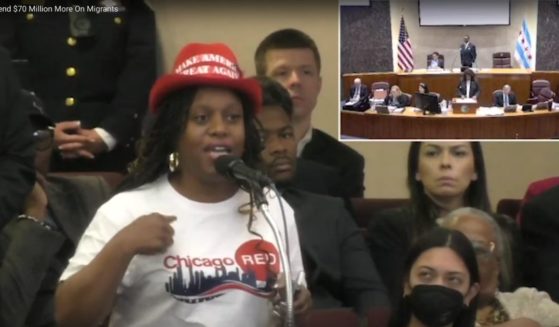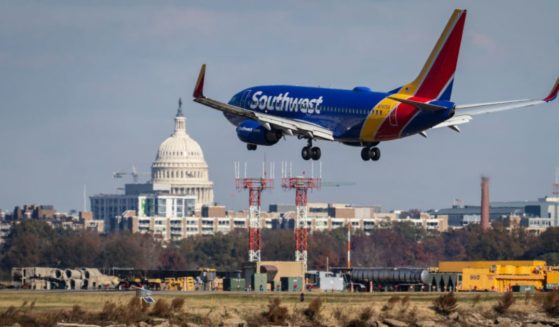Historians Debunk Popular Myth Regarding the Cause of the Great Chicago Fire
Chicago seems to like to pin the blame for its misfortune on farm animals.
For decades the Cubs’ failure to get to the World Series was the fault of a goat that was once kicked out of Wrigley Field. And for well over a century, a cow belonging to Mrs. O’Leary caused the Great Chicago Fire of 1871.
But just as baseball fans know the Cubs’ pre-2016 shortcomings had nothing to do with a curse put on the team by a goat’s angry owner, historians say there is no evidence that the massive blaze that destroyed a huge swath of Chicago and displaced about a third of its residents began when Catherine O’Leary’s cow kicked over a lantern.
Indeed, nobody puts much stock in that story these days. In 1997, the Chicago City Council went so far as exonerating the cow and its owner.
“The family is still mad about how she was treated,” Peggy Knight, O’Leary’s great-great-granddaughter, told The Associated Press on Thursday, a day before the 150th anniversary of the start of the fire.
“She did not deserve that.”
How the immigrant from Ireland came to be blamed is a familiar story: She was a victim of prejudice and circumstance.
The fire started in or near her home and her family’s barn. And while it destroyed much of the city, it miraculously spared her own house.
More importantly, O’Leary was easy to blame because of who she was and what she represented.
“Irish immigrants were often considered as the dregs of American society in the 1870s. They were easy targets,” said John Russick, senior vice president of the Chicago History Museum.
The museum recently put on its website an interactive exhibit in which visitors can maneuver around a painting of the fire to, among other things, follow its path.
“In the mainstream Yankee press she fit into a whole set of existing prejudices,” said Carl Smith, author of “Chicago’s Great Fire: The Destruction and Resurrection of an Iconic American City.”
“She was poor, an immigrant from Ireland, Catholic and a female.”
“The cartoons in the papers made her out to be an Irish drunk,” said Knight.
The shabby treatment made life so unbearable that the family moved to the far southern edge of the city, where they lived under the name of Walsh, Knight said.
The blame continued for years, even though the Chicago Fire Department held a hearing within weeks of the blaze in which it concluded the cause could not be determined.
“She was exonerated and the whole thing kept going,” Knight said.
It picked up speed when in the 1890s, someone added lyrics to the song “Hot Time in the Old Town Tonight” that implicated O’Leary and her cow.
“I call her in my book the fire’s most enduring victim,” said Smith.
So how did the fire start?
Smith said that may never be known.
Others, including Knight and Richard Bales, author of “The Great Chicago Fire and the Myth of Mrs. O’ Leary’s Cow,” blame a man named Daniel Sullivan, who was the first to sound the alarm about the blaze.
Knight believes the one-legged horse-cart driver known by everyone at the time as “Peg Leg” Sullivan had been drinking when he accidentally dropped his cigar in the barn.
Bales has researched property records and read transcripts of the Chicago Fire Department’s hearing in which both Sullivan and O’Leary testified.
Sullivan said he saw the fire from in front of a neighbor’s house, but Bales says photographs and housing tract records show his view would have been blocked.
“I am 100 percent convinced Daniel Sullivan started the fire,” he said.
But a mock trial at John Marshall Law School held not long after the City Council’s exoneration of O’Leary ended with a jury just as convinced that Sullivan had not lied about the events of that night.
It all leads Russick to wonder if the choice of the cow as the culprit has, all along, been the city’s way of admitting it does not know what happened.
“To some degree blaming the cow is a way to say it was an accident, that in some ways it was a benign way to say nobody was responsible,” Russick said.
Then again, he added, “We don’t know it was an accident.”
The Western Journal has reviewed this Associated Press story and may have altered it prior to publication to ensure that it meets our editorial standards.
Truth and Accuracy
We are committed to truth and accuracy in all of our journalism. Read our editorial standards.












